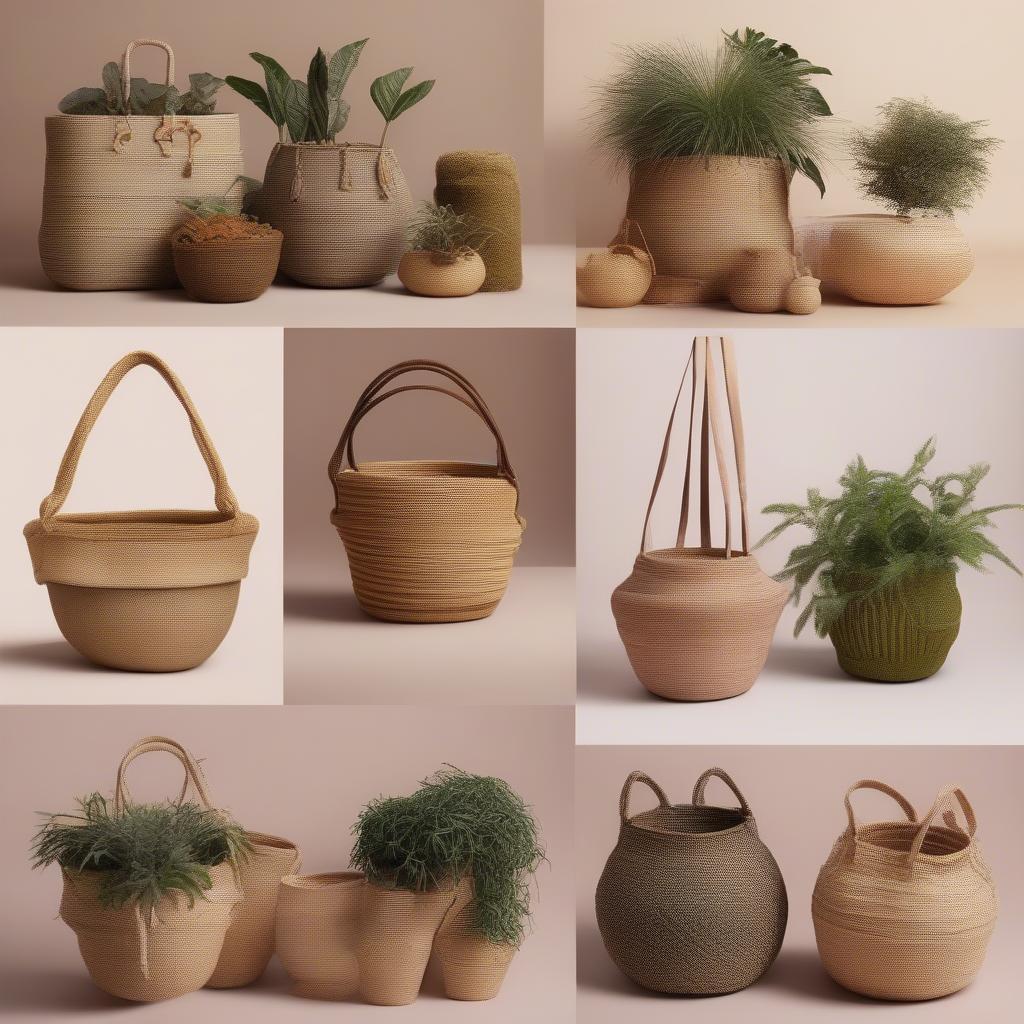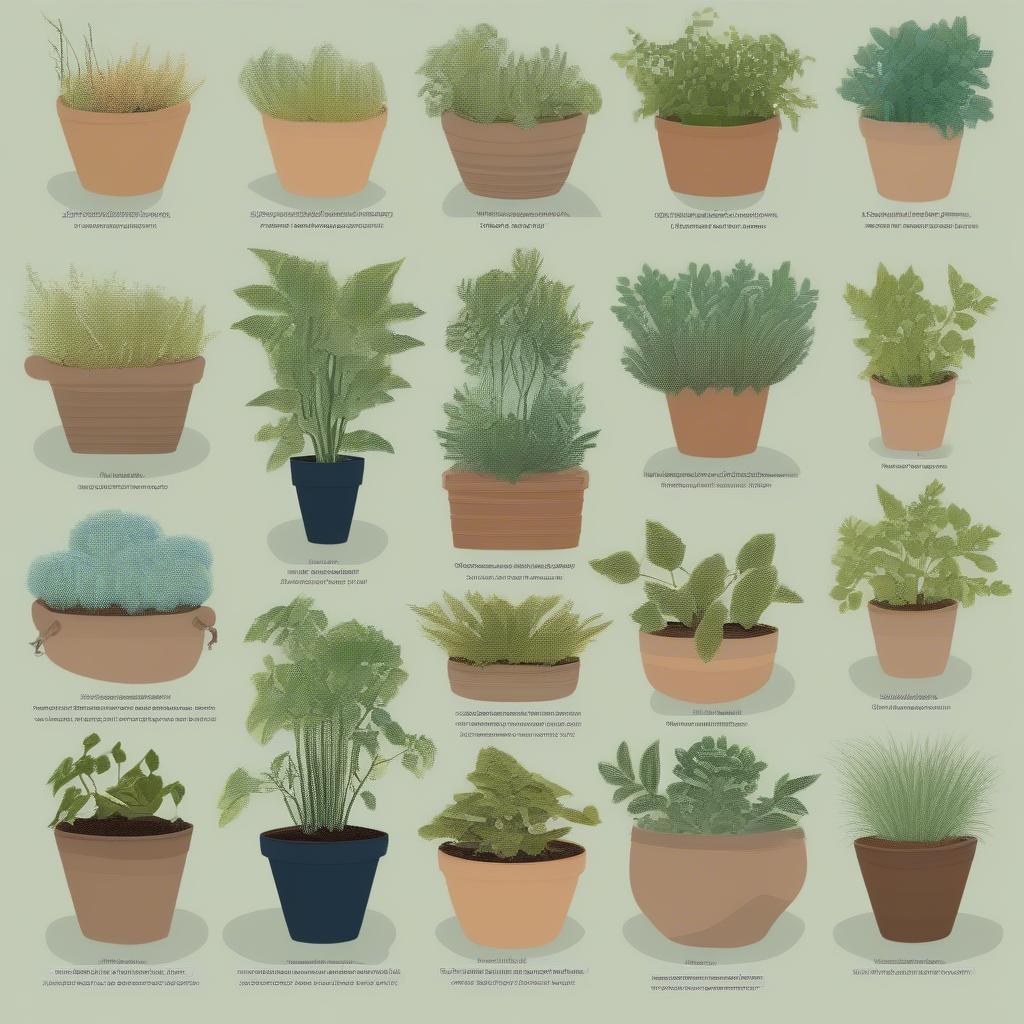Woven Bag
Are Woven Bags Better Than Pots?
When it comes to choosing the right home for your plants, the “Are Woven Bags Better Than Pots?” question is a common one. Both woven bags and traditional pots offer unique advantages and disadvantages, and understanding these differences is key to making the best choice for your green companions. Let’s delve into a comprehensive comparison to help you determine the optimal growing environment for your plants.  Woven Bags vs. Pots: A Comprehensive Comparison
Woven Bags vs. Pots: A Comprehensive Comparison
Understanding the Benefits of Woven Bags
Woven bags, often made from materials like jute, burlap, or non woven planter bags, offer excellent breathability and drainage. This promotes healthy root development by preventing waterlogging and allowing air to circulate freely around the roots. This aeration also helps regulate soil temperature, preventing overheating in hot weather and chilling in cooler temperatures. Additionally, the flexible nature of woven bags allows for “air pruning” of roots, leading to a denser, healthier root system. They are also lightweight and easy to move around.
Breathability and Drainage
The porous nature of woven materials allows excess water to drain easily, preventing root rot and other issues caused by overwatering. This is particularly beneficial for plants that are sensitive to moisture, such as succulents and cacti.
Air Pruning
When roots reach the edge of a woven bag, they are exposed to air and dry out, stimulating the growth of more roots within the soil. This process creates a more robust and efficient root system, leading to healthier and more vigorous plant growth.
Portability and Flexibility
Woven bags are lightweight and easy to move, making them ideal for gardeners who like to rearrange their plants frequently or who need to bring plants indoors during inclement weather. Their flexibility also makes them a great space-saving option for small gardens or balconies.
Exploring the Advantages of Traditional Pots
Traditional pots, available in a variety of materials like terracotta, ceramic, and plastic, offer durability and stability. They are less prone to tipping over, especially when dealing with larger plants or windy conditions. Pots also come in a wide range of styles and colors, allowing for greater aesthetic control in your garden. They can be glazed or painted, adding a decorative touch to your outdoor or indoor space.
Durability and Longevity
Pots made from sturdy materials like terracotta or ceramic can last for many years, providing a long-term home for your plants. They are resistant to wear and tear and can withstand various weather conditions.
Aesthetic Appeal
Traditional pots offer a classic and timeless appeal that can enhance the beauty of your garden. They come in a vast array of shapes, sizes, and finishes, allowing you to find the perfect match for your plants and your personal style.
Stability and Support
The rigid structure of pots provides excellent stability for plants, especially larger or top-heavy varieties. This is particularly important in windy areas or for plants with shallow root systems.
Are Woven Bags Better Than Pots? A Direct Comparison
So, what are non woven seedling bags? And how do they stack up against pots? The best choice depends on the specific needs of your plants and your gardening preferences. Woven bags are ideal for promoting root health and portability, while pots offer durability and aesthetic versatility.  Choosing the Best Containers for Your Plants
Choosing the Best Containers for Your Plants
Water Retention
Woven bags offer superior drainage, but may require more frequent watering. Pots, on the other hand, retain water better, but can be prone to overwatering if not carefully monitored.
Temperature Control
Woven bags allow for better air circulation, preventing extreme temperature fluctuations in the soil. Pots can absorb and retain heat, potentially overheating the roots in hot climates.
Aesthetics and Style
Woven bags offer a more natural and rustic look, while pots provide greater aesthetic versatility with a wider range of colors, shapes, and finishes.
“Choosing the right container is about understanding your plant’s needs and your own gardening style,” says expert horticulturist, Amelia Greenleaf. “There’s no one-size-fits-all answer, and experimentation is key.”
Making the Right Choice for Your Plants
Biodegradable non-woven nursery bags review can offer valuable insights into specific bag types. Ultimately, the decision of whether woven bags are better than pots comes down to the specific requirements of your plants and your gardening practices. Consider the climate, plant type, and your personal aesthetic preferences when making your choice.
Considerations for Different Plant Types
Some plants, like those with sensitive root systems, thrive in the airy environment provided by woven bags. Others, like larger plants requiring more stability, may benefit from the sturdiness of traditional pots. What are most non woven grow bags made of? This is an important question to consider as the material can impact its durability and lifespan.
Climate and Environmental Factors
In hot climates, the breathability of woven bags can prevent overheating, while in colder climates, pots may offer better insulation.
“The beauty of gardening is the constant learning process,” adds Ms. Greenleaf. “Don’t be afraid to try different container options to see what works best for your plants.”
Conclusion: Woven Bags vs. Pots – A Balanced Perspective
The question of whether woven bags are better than pots isn’t a simple yes or no. Both offer unique advantages for different plants and gardening situations. By considering the factors discussed above, you can make an informed decision that will promote healthy growth and enhance the beauty of your garden. White woven fabric grow bags offer another option for those looking for a specific aesthetic. Ultimately, the best choice depends on understanding the needs of your plants and matching them with the right container.
“Remember, the goal is to create a thriving environment for your plants,” concludes Ms. Greenleaf. “Choose the container that best supports their individual needs.”
When you need assistance, please contact us at Hanoi, Vietnam or Tech Avenue, Suite 12, San Francisco, CA 94105, USA. We have a 24/7 customer service team.
